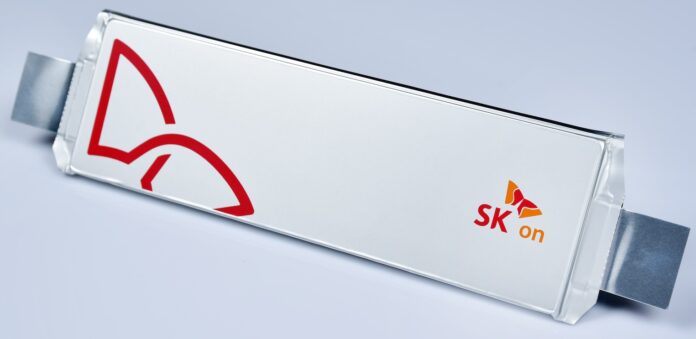SK On will showcase battery cells highlighting advanced fast-charging solutions along with various products demonstrating its latest R&D achievements at the upcoming InterBattery 2024 battery exhibition in Seoul from March 6 to 8.
The original SF (Super Fast) Battery, first introduced in 2021, was a high-nickel battery that can be charged from 10% to 80% in 18 minutes. The Advanced SF Battery is an upgraded version of the SF Battery, increasing the energy density by 9%, while maintaining the same fast-charging time of 18 minutes.
The Advanced SF Battery is a result of SK On’s continuous effort to boost its self-developed quick-charging technologies. The charging speed of a battery is determined by the distance lithium ion must travel and the transfer speed. Generally, high energy density comes with high anode resistance when charging, which leads to longer charging time as the speed of lithium-ion transport slows down.
SK On managed to shorten the transport distance of lithium ions with the application of a special coating method that dramatically lowers the anode resistance and also with an anode alignment process.
For the development of the Advanced SF Battery, SK On also utilized an optimized fast-charging protocol with analytics solutions designed to maximize the charging speed for batteries.
The SF+ Battery, another variant of the SF Battery, offers even faster charging time than the original: 15 minutes. SK On was able to reduce the transport distance of lithium ions, while increasing their movement speed by applying high-capacity silicon with low-resistance graphite on the self-developed dual layer structure.
At InterBattery 2024, SK On will also showcase the Winter Pro LFP Battery underscoring its low-temperature performances. Generally, a LFP battery suffers 50-70 percent drop in driving range it can offer at a low temperature (-20 ˚C). However, compared to the existing conventional LFP, the Winter Pro LFP Battery extends the charging and discharging capacity by 16% and 10%, respectively, while increasing the energy density by 19%.




